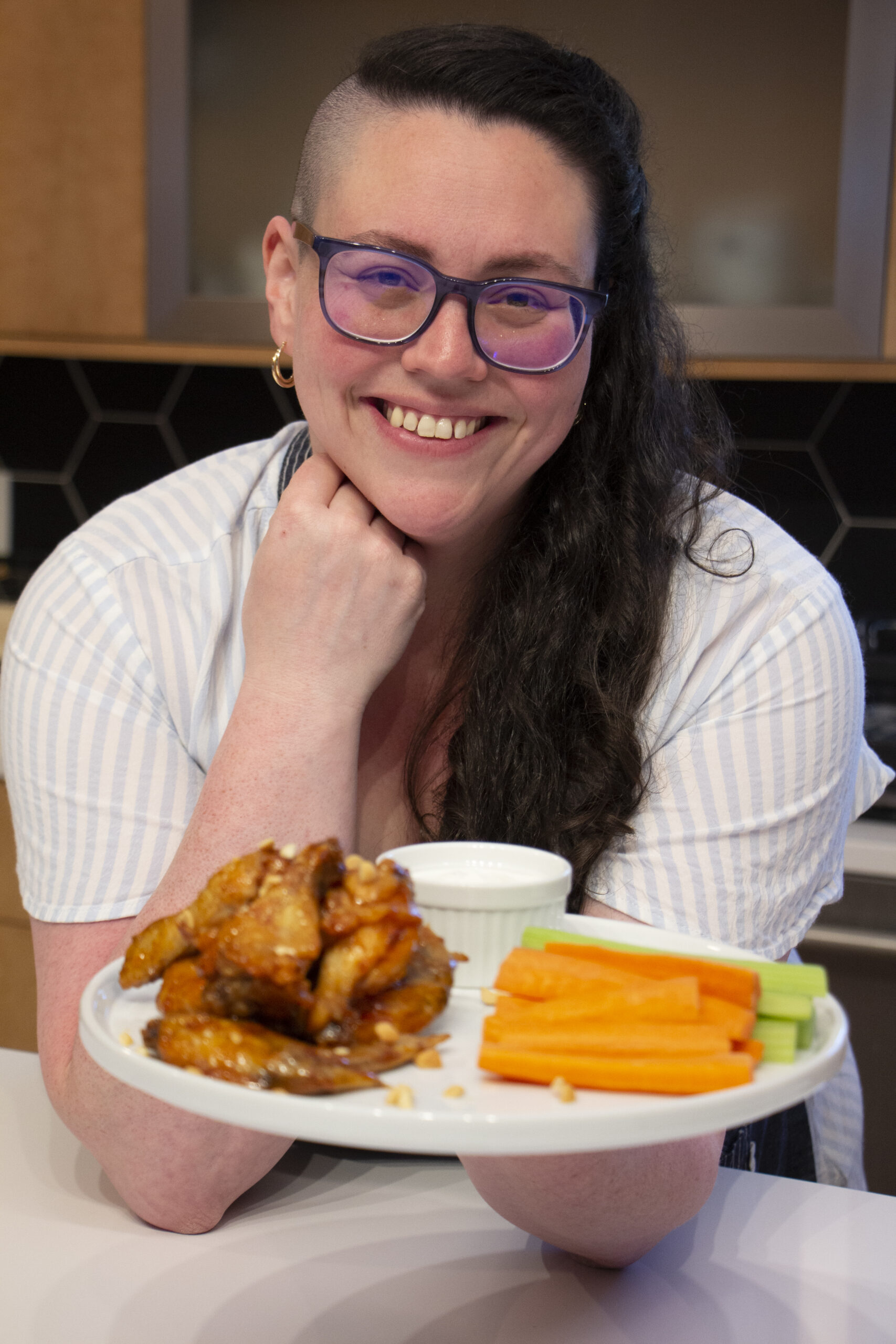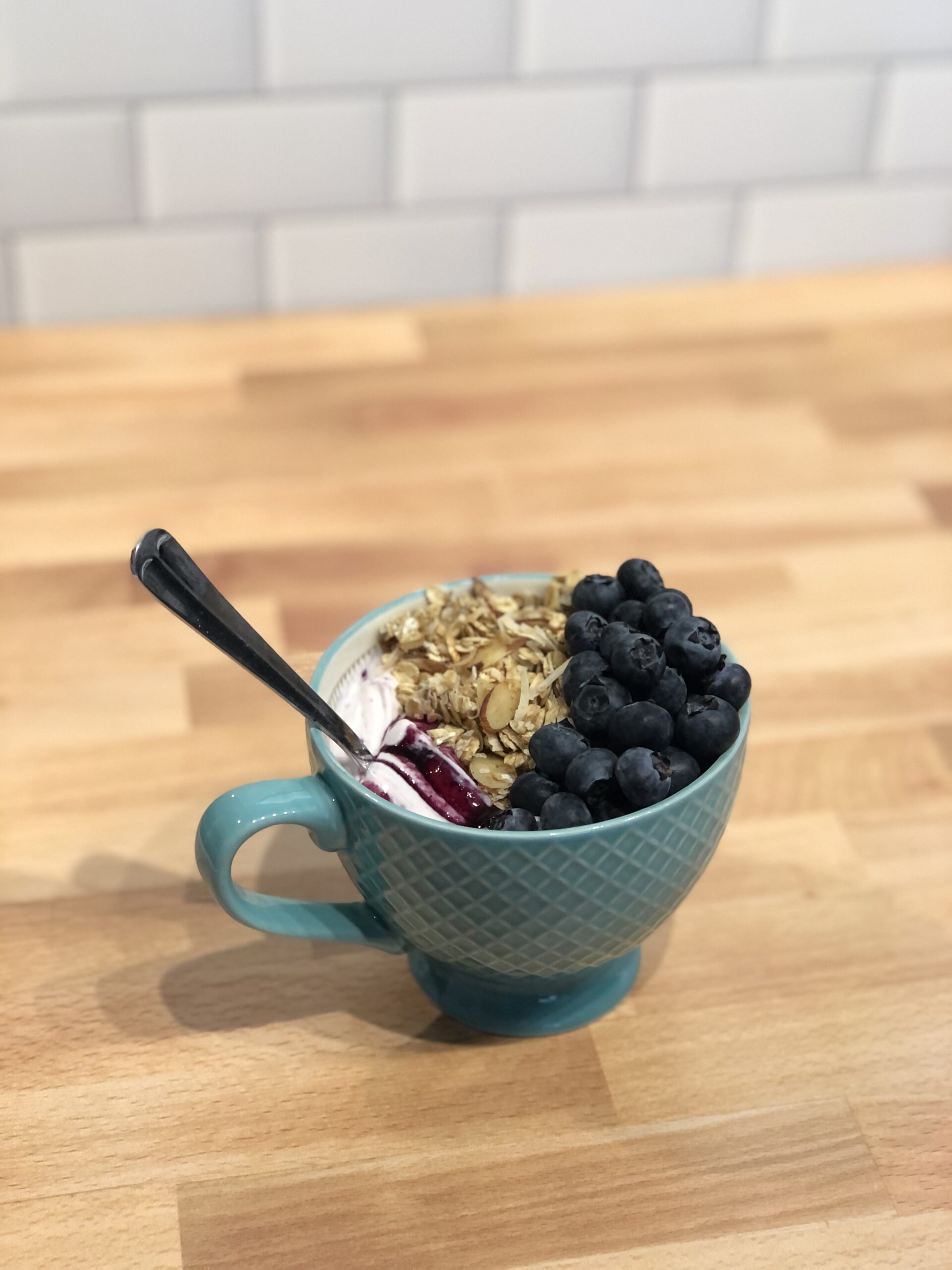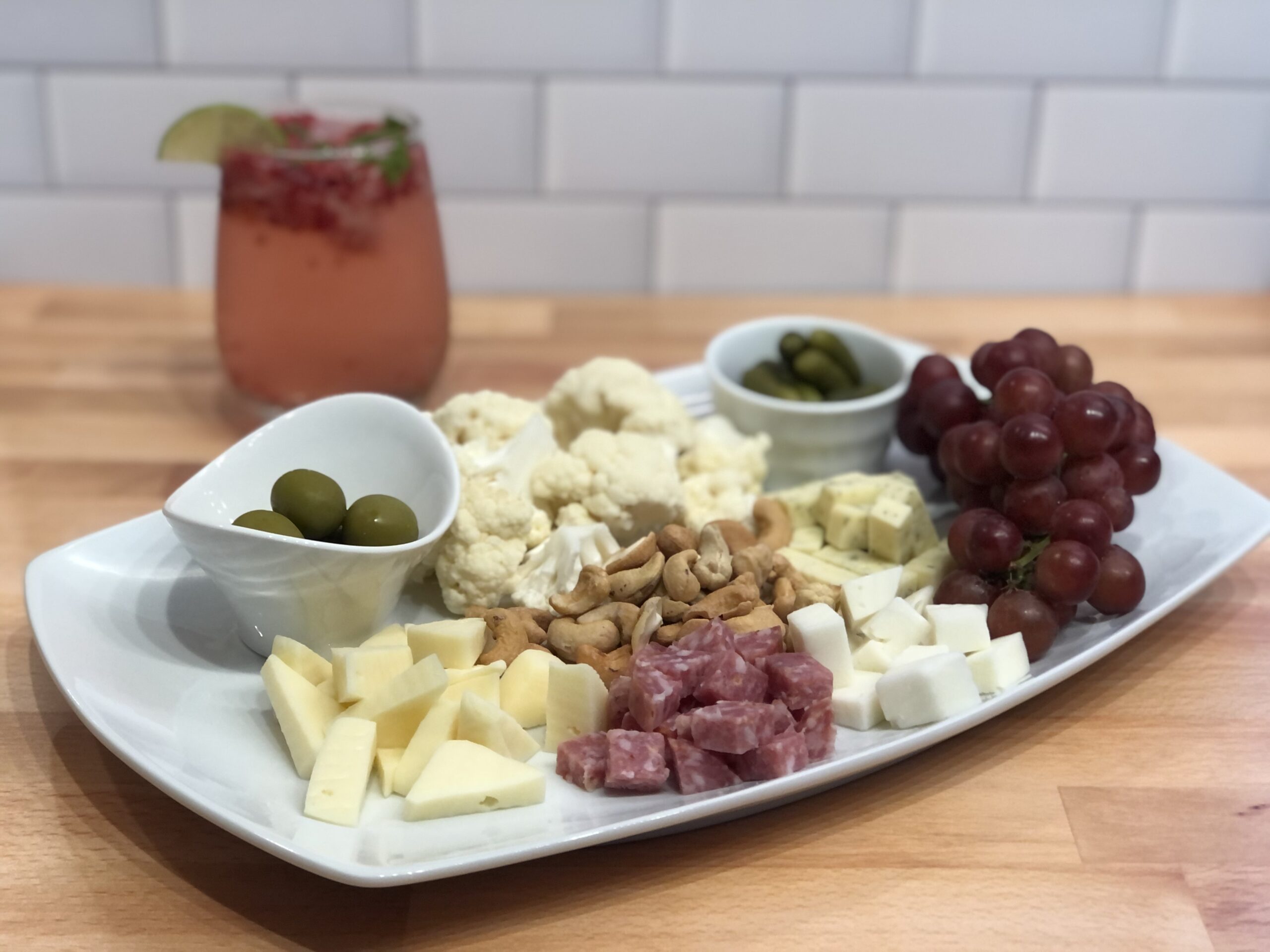Overcoming Denial: This Chef Lowered Her A1c from 9.5 to 5.9 Percent
Written by: Ginger Vieira
6 minute read
June 11, 2021
Within 95 days, Genny lowered her A1c from 9.5 to 5.9 percent while still enjoying a diet full of real food and flavor.
Editor’s note: While reading this personal story, it’s important to remember that no diabetes journey is the same. While many people with type 2 diabetes will see dramatic results in their A1c from changes in diet, this is still a progressive disease for many. This means that while changes in lifestyle habits are a critical part of managing type 2 diabetes, many people may continue to need diabetes medications to manage safe and healthy blood sugar levels. Consult with your healthcare team before making any adjustments in your own diabetes regimen. This personal story is intended to inspire and encourage you in your own journey living with diabetes.
 Genevieve “Genny” St. Germain was diagnosed with type 2 diabetes at 37 years old in September of 2020, amidst the COVID-19 pandemic. In the months leading up to her diagnosis, Genny thought she’d made great progress in improving her health. It had been two years since her last appointment with her primary care provider.
Genevieve “Genny” St. Germain was diagnosed with type 2 diabetes at 37 years old in September of 2020, amidst the COVID-19 pandemic. In the months leading up to her diagnosis, Genny thought she’d made great progress in improving her health. It had been two years since her last appointment with her primary care provider.
“I thought I was doing really well,” recalls Genny, who had recently graduated from culinary school. (Her first college degree, by the way, was in Automotive & Diesel Mechanics, which led to a 10-year career as one of the brightest smiles in the automotive industry.) She was expecting her doctor to be pleased with her progress, too. “I’d lost 15 pounds and I had changed some of my eating habits, so I thought I was eating healthier, too.”
Already diagnosed with hypothyroidism, Genny’s lab results took her by surprise.
Genny’s health data at her diagnosis in September 2020:
- A1c: 9.5 percent
- Average blood sugar level: 12.6 mmol/L226 mg/dL
- Weight: 250 pounds
Genny had been told she had prediabetes for several years prior to her diagnosis, but despite her own father being a renowned endocrinologist, she dismissed the warning. She didn’t have many of the classic symptoms, so she assumed she was fine. Looking back at the months right before her diagnosis, Genny realizes she was experiencing significant dandruff and frequent fluctuations in her eyesight, and had far less energy than she has today.
“I never took that prediabetes diagnosis as seriously as I should have,” she says. The diagnosis of type 2 diabetes, however, got her attention. Within 95 days, Genny completely changed her diabetes health.
Personal health data 95 days later:
- A1c: 5.9 percent
- Average blood sugar level: 6.8 mmol/L123 mg/dL
- Weight: 224 pounds
- Medication: 1000 mg metformin twice a day
“I was instantly motivated,” recalls Genny. “I was motivated to avoid needing additional medications. I was motivated to take back control of my health. I was motivated to make the necessary changes, to take control of the things I could.”
Here, we’ll look at the changes Genny made that dramatically improved her diabetes health while still enjoying cooking and eating a wide variety of foods—and carbohydrates.
My exercise habits: back then vs. today

Genny’s homemade buffalo wings with veggies
Then: “I’ve never liked exercising and I’ve never been into sports,” says Genny, who stayed engaged in school sports by being an assistant manager.
Intimidated by gyms and knowing she’d never feel comfortable in that setting at this time in her life, she focused instead on walking.
Today: “Walking is the only thing I feel comfortable doing,” adds Genny, who makes an effort to walk daily. Where she really focused her energy, however, was in diet.
“I focused the most on what I was eating because it’s one thing I can control.
My diet: back then
With an obvious passion for cooking, Genny has been preparing dinners every night for her sister, whom she shares a house with, and her parents, who moved in temporarily during the pandemic while they are in the process of buying a new home.
“I ate a lot of simple carbs back then,” she recalls. “A lot of pasta and white rice.”
One of Genny’s favorite culinary skills included homemade sushi. Despite being full of wholesome real-food ingredients, she knows the extra-sticky rice contains far more starch, which is what makes it sticky.
“I also loved to bake, but even though I was making everything homemade with real ingredients, it was all still high in simple carbs and lacked any real nutritional value.”
A breakfast routine she and her sister had established was a morning drive for cream cheese bagels and a Starbucks Frappuccino.
Genny recalls her daily beverages including a lot of juice, whole-fat chocolate milk, and homemade cappuccinos using a store-bought powder mix combined with steamed whole milk.
Having quit diet soda years beforehand during a two-month stint with the Whole30 diet, Genny couldn’t stand the taste of aspartame anymore, and had started drinking full-sugar Dr. Pepper regularly instead. (Many years prior to her diagnosis, Genny had already made a personal decision to avoid alcohol.)
My diet: today

Genny’s carne asada taco’s with corn/flour tortillas
“At first, I found it really difficult to know what to eat, but when I started checking my blood sugar multiple times a day and seeing how different foods affected it, I realized it’s really all about the carbohydrates,” says Genny.
“Yes, fat plays a role, but I’ve lowered the carbs or replaced them with more complex carbs in a lot of recipes, and my blood sugar doesn’t spike.”
Changes Genny made instantly include:
- Cutting all juice and soda from her diet
- Drinking a lot of water and seltzer
- Swapping full-fat chocolate milk to chocolate almond milk
- Swapping cream cheese bagels for her own Greek yogurt parfait recipe
- “I tried whole-grain bagels, but they were still spiking my blood sugar.”
- Swapping white rice or pasta for grains like farro, pearled barley, or black rice
- Swapping grilled zucchini for noodles in lasagna
- Swapping sandwich bread for a low-carb pita pocket
- Swapping homemade fried tortillas for store-bought corn/flour tortillas
- Swapping whole milk for water and a splash of Half ‘n Half with her powdered cappuccino mix
- Limiting full-sugar desserts to a twice per month treat of ice cream
- Satisfying her sweet-tooth for occasional desserts of fresh fruit with CoolWhip and mini-chocolate chips OR an Outshine frozen coffee bar OR Nabisco chocolate wafers with natural peanut butter
- Usual lunch: lunch of either apple with peanut butter OR a cheese board with 3 styles of cheese, dried salami, raw cauliflower, picks, fruit and nuts
- “I enjoy having a lot of options on the cheese board to just pick at slowly.”
- Eating lower-carb dinners (usually a salad with fat and protein) on the day she plans to enjoy a full-sugar dessert of ice cream
- Planning her family’s dinner meals ahead of time, ensuring there’s plenty of variety

Genny’s Greek yogurt parfait recipe, with fresh berries, almond slivers, homemade granola, blueberry preserves, and vanilla extract
“For me, variety is the spice of life,” explains Genny, who has created some consistency in the weekly planning around family dinners.
Dinners at the St. Germain’s house with Chef Genevieve
Genny is grateful for the support from her parents and younger sister as she experimented with new recipes, often from The Diabetes Food Hub, until she felt comfortable creating her own recipes with her blood sugar goals in mind. Her general approach to dinner goes something like this:
- Mondays: fish with veggies and a grain
- Tuesday: tacos with corn & flour hybrid tortillas with shrimp, turkey, etc.
- Wednesdays: Eggplant beef and broccoli
- Thursdays: Quiches—small portion with salad or salmon cakes
- Fridays: Sandwiches day, Blue Mango vegetarian patty or meatball subs, usually with no bun
- Saturdays: chicken Cobb salad with potatoes
- Sundays: chicken kabobs with veggies and a grain
“I do miss the bagels,” says Genny, “and making sushi.”

Genny’s cheese plate (for 2) lunch with raw cauliflower, fruit, pickles, and salami
She experimented with making healthier homemade sushi by using a 50/50 split of sticky rice and black rice. The impact on her blood sugar was certainly lower than traditional sushi, but still higher than she’d like to see after a meal.
Today, eight months after her diagnosis, Genny still checks her blood sugar daily,
“I think I had this ‘I’ll deal with later’ attitude about my prediabetes, and then suddenly ‘later’ was now,” recalls Genny of what helped kick her motivation into gear. “I just knew I had to do this, I had to make changes.”
She’s certain the changes she’s made have her benefitted her family, too.
“It’s really a mental game of denial vs. acceptance,” says Genny. “And by the way, I’ve done all of this without eating any kale.”

Author
Ginger Vieira
Ginger Vieira is an author and writer living with type 1 diabetes, celiac disease, fibromyalgia and hypothyroidism. She’s authored a variety of books, including “When I Go Low” (for kids), “Pregnancy with Type 1 Diabetes,” and “Dealing with Diabetes Burnout.” Before joining Beyond Type 1 as digital content manager, Ginger wrote for Diabetes Mine, Healthline, T1D Exchange, Diabetes Strong and more! In her free time, she is jumping rope, scootering with her daughters, or walking with her handsome fella and their dog.
Related Resources

Antoine Gibson is no stranger to overcoming challenges. As a saxophonist and marathon runner living...
Read more

Danica Collins not only prepared for one of the most challenging physical events of her...
Read more

Beyond Type 1 is spotlighting inspiring athletes with type 1 diabetes as they prepare for...
Read more

